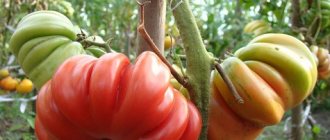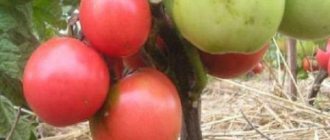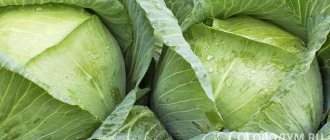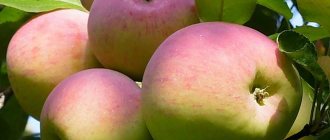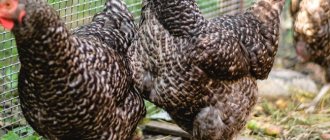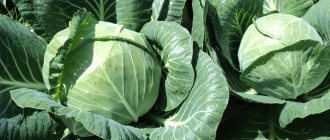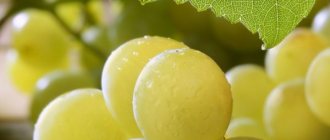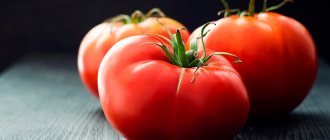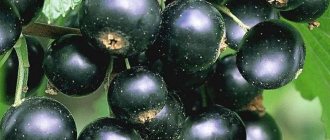The “Super-extra” grape variety (more precisely, “Citrine”) is considered the most successful hybrid form, created by amateur breeder Evgeniy Georgievich Pavlovsky. This relatively young variety of culture is zoned throughout our country. Ecological plasticity, standard taste of berries and a number of other advantages aroused great interest among professional winegrowers and owners of summer cottages not only in Russia, but also abroad.
The “Super-extra” grape (pictured), due to its high yield and ultra-early ripening period, is included in the list of 12 promising table varieties for Eurasia
In the article we will talk in detail about the features of “Super Extras”, and let’s start with the main characteristics:
| Parameter | Characteristic |
| Culture | Grapes (Vitis Vinifera L.) |
| Variety | "Citrine" ("Super-extra") |
| Growing conditions | Gardening |
| Direction of use | Dining room |
| Flower type | Bisexual |
| Bush growth vigor | Big |
| Ripening time | Early ripening (super early): mid or late July (90-105 days from the start of the growing season) |
| Consumption period (fruit shelf life) | Summer (autumn); in the refrigerator for more than 2 months |
| Precociousness | For the 4th year of growing season |
| Productivity of one bush per season | High – on average 8-11 kg (maximum up to 30 kg); in industrial plantings – 14.6-18.1 t/ha |
| Bunch shape and weight | Large, conical, medium-dense; weighing 500-700 g, maximum - over 1 kg |
| Fruit shape and color | Large, oblong, light green, matte yellow when fully ripe. Firmly attached to the stalk. The skin is thin, but dense, you can’t feel it when eating |
| Fruit weight | 8-13 g |
| Pulp | Meaty, juicy, dense, crispy |
| Tasting assessment (taste qualities) | 8.9 points (out of 10) – the taste is sweet, simple, pleasant |
| Purpose of fruits | Dessert type |
| Sustainability | Weakly affected by mildew, gray mold, oidium - 2-2.5 points (out of 4); susceptible to phylloxera |
| Winter hardiness | Withstands frosts down to −24 ℃ (in most regions requires shelter for the winter) |
| Year of registration in the State Register of the Russian Federation | 2015 |
| Recommended growing regions | All regions of Russia |
| Originator/patent holder | Federal State Budgetary Educational Institution of Higher Education "Kuban State Agrarian University named after. I. T. Trubilina" (Krasnodar) |
Advantages and disadvantages
When deciding to start growing “super extra” grapes, you should familiarize yourself in advance with the list of its positive and negative characteristics.
The main advantages of the variety for gardeners and winegrowers include:
- Large fruit.
- Resistant to frost and other adverse weather conditions.
- Good transportability and keeping quality.
- Abundant yield.
- Immunity to diseases characteristic of the culture.
Also, the indisputable advantage of the variety is that the berries on the bushes ripen evenly and have a pleasant taste.
The “super extra” has few disadvantages, but there are still some disadvantages:
- The probability of the formation of berries of different sizes on a bunch.
- Dense and tough skin.
- Tendency to phylloxera.
In addition, the bushes need timely pruning, aimed primarily at normalizing the yield. Otherwise, not only the quality of the berries deteriorates, but also their ripening period increases.
Advantages and disadvantages of the variety
Amateur winegrowers call the disadvantages of the variety
The main advantages are considered to be high yield and very early ripening.
The positive aspects of “Super-Extra” include: super-early ripening, fruits with a pleasant taste, high yield, and transportability. In addition, according to the results obtained during field tests in the natural conditions of the Kuban, this variety of crop is weakly affected by mildew, gray mold and oidium.
Origin
“Super Extra” grapes are the result of breeding work by amateur gardener E. G. Pavlovsky, obtained by crossing the varieties “Talisman”, “Cardinal” and a mixture of pollen of other species. Originator: Federal State Budgetary Educational Institution of Higher Education “Kuban State Agrarian University named after. I. T. Trubilina."
Parents of “super extra” - “talisman” and “cardinal”
Reference! The variety was included in the State Register of Agricultural Achievements in 2015 under the name “citrine”.
Disease Prevention
As already noted, while resistant to oidium and mildew, Super Extra grapes are defenseless against phylloxera. Therefore, for preventive purposes, bushes must be sprayed with Bordeaux mixture before flowering.
To prevent the invasion of dangerous phylloxera, it is best to use insecticides “Aktellik” or “Fozalon” that are not washed off by rain and are safe for bees.
This variety is also not afraid of tick invasion, but with excessive watering or in rainy summers, the berries bursting from excess moisture can be attacked by flies and wasps. Therefore, to prevent such attacks, it is necessary to cover the ripening bunches with a net.
The Super Extra grape variety lives up to its name with its super-early ripening and extra-ability to produce high yields in various climatic conditions, for which it is highly valued by winegrowers both in summer cottages and on agricultural plantations.
Main characteristics
“Super Extra” is a table grape variety whose appearance is very similar to the “Arcadia” variety. It is also worth noting such super-early varieties as “transformation”, “Veles” and “rumba”.
Maturation period and class
This is a very early ripening variety that requires only 95-105 days to fully ripen the fruit. The exact time when the crop is ready for harvest depends on the climate and weather conditions of the growing region. As a rule, the harvest time falls on the last days of July or the beginning of August.
Bush
The “super extra” grape bushes are powerful, vigorous, young shoots are light green, old shoots are light brown.
The leaves are rich green in color, medium in size, round in shape, five- or three-lobed with weak dissection, jagged edges and light cobwebby pubescence on the underside, the surface is smooth or reticulate-wrinkled. The flowers are bisexual, the degree of pollination is average.
Bunches and berries
The brushes are large, loose, cylindrical-conical in shape, weighing on average 500-800 g , but larger specimens are found, weighing up to 1.6 kg.
The berries are large, ovoid, slightly elongated, grow up to 3.5 cm in length and 2.5 cm in width and weigh on average from 7 to 12 g. The fruits are covered with a durable and rather hard green-yellow skin, which by the time of ripening takes on an amber hue.
The pulp is fleshy, crispy, the juice is colorless, there are 2-3 medium-sized seeds inside . Sugar content when fully ripened is 17.4%, acidity is 6.1 g/l.
Reference! The berries on the clusters have different sizes: the lower they are located, the smaller.
Taste
The taste of the fruit is simple, pleasant, moderately sweet, but they do not have a bright and refined aroma.
Productivity
The bushes begin to bear fruit from the second year after planting. With proper care, up to 25 kg of grapes can be harvested from 1 bush , and the yield from 1 hectare of land reaches 169 centners.
Productivity and ripening time
The plant produces its first signal harvest in the 2nd year after planting, marketable fruiting begins in the 4th - on average about 25-30 kg per bush.
The opinion of an experienced Ukrainian gardener about the yield potential can be found in the following video:
According to the results of field tests in the natural conditions of Kuban (when bushes were placed according to a pattern of 3.0 x 1.5-2.0 m, formed like a horizontal cordon or a standardless fan, and growth was carried out on a vertical trellis), five-year-old plantings showed a yield of 8.9-11 .0 kg per plant or 14.6-18.1 t/ha. Moreover, during the growing season, care consisted of standard agrotechnical measures.
Removable maturity occurs 90-105 days after bud break. The clusters can remain on the bushes for a long time, without losing the taste of the berries.
The harvest of the Citrine grape variety in the Central zone of Kuban amounted to 18 t/ha
The berries are firmly held on the stalks, without falling off even when harvesting is late. The taste and aroma develop in mid or late July. Properly picked fruits are stored well in the refrigerator for more than 2 months. The juicy pulp is reliably protected from damage by a thick skin, which is practically not injured during transportation.
Comparison with analogues
“Super Extra” is far from the only table grape variety with early ripening. However, thanks to its characteristics, it can compete with other varieties.
| Sign | Variety | ||||
| Super extra | Karmacode | Russian Korinka | New gift to Zaporozhye | Blagovest | |
| Ripening period | 95-105 days | 110-125 days | 110-115 days | 110-125 days | 110-115 days |
| Frost resistance | Up to -25 °C | Up to -22 °C | Up to -22…-28 °C | Up to -24 °C | Up to -23 °C |
| Yield per bush | Up to 25 kg | About 25 kg | Up to 12 kg | Up to 30 kg | 6-8 kg |
| Bunches | 500-800 g | 300-500 g | 180-200 g | From 800 g to 1.1 kg | From 900 g to 1.2 kg |
| Taste | Simple, moderately sweet | Tart with a slight nutmeg aroma | Rich, without extraneous flavors | Sweetish with apple aftertaste | Sweet with notes of duchess and aroma of nutmeg |
| Color | Green-yellow with amber tint | Red-violet | Golden with soft pink blush | Greenish white | Green with a yellowish tint and an amber tan |
| Disease resistance | Average | Average | Average | High | Average |
| Shelf life | A few months | Up to 3 months | Until autumn on the bush | Up to 3 months | A few months |
| Sugar content | 17,40% | 16-22% | 22-23% | 16-19% | Up to 22% |
| Acidity | 6.1 g/l | 9 g/l | 5-6 g/l | 5-6 g/l | About 8 g/l |
Description of the Super Extra grape variety
The weight of the brush is small - from 500 to 700 grams. Manicure Finger and Kishmish Nakhodka compete in the same weight category. The density of the brush is loose. They consist of grapes of different sizes - from small fruits to very large ones.
The weight of the berry reaches 7-9 grams. The shape of the fruit is round-oval, elongated, 25x35 millimeters.
The skin of the grapes is dense, you can feel it when eating. Much rougher than Arcadia grapes.
The berry is elegant, sunny, glowing from the inside. The color of the fruit is yellow. Sugar content 10 g/100 cm3. At full maturity, 18% Brix was observed. Acidity 5 g/dm3.
Belongs to the largest very early varieties
Drip irrigation is not recommended. At the same time, the taste of the berries becomes watery and herbal.
The pulp of the own root bush is very juicy with a pleasant sweet taste. Has a delicate nutmeg aroma.
When grafting Super Extra onto shoots of other varieties, the taste of the berries on different bunches will be different - different and varied. The varieties Moldova, Krasen and Blestyaschiy are well suited for grafting.
Observed:
- yellow berries with firm flesh and a citron flavor;
- unripe green-cream fruits with a viscous consistency and simple taste;
- white berries of a creamy color with dense pulp and the aroma of nutmeg.
Muscat is not very noticeable. It is compared with the Sofia and Livia varieties, which are significantly superior to Super Extra in their pronounced nutmeg aroma. Muscat can disappear when the bush is heavily overloaded with crops.
Features of cultivation
In general, the requirements for planting and caring for “super extra” grapes almost completely coincide with the requirements of other super early varieties. However, some nuances should still be taken into account.
Landing
A favorable period for planting grapes is considered to be spring or autumn , and in both cases there are pros and cons.
In the case of spring planting, young plants do not have to immediately winter in the open ground and they have time to take root and stock up on nutrients. In this case, it is necessary to strictly observe the planting date - by planting seedlings earlier or later than the optimal time, you can slow down their development.
Autumn planting takes longer; seedlings quickly grow in spring without wasting time on adaptation, and during autumn and winter days with above-zero temperatures, the root mass of plants increases. However, there is a risk of losing seedlings at sub-zero temperatures if covering material is not used.
“Super Extra” is unpretentious in soil composition, but prefers light, moist, nutritious soil with good aeration. You can learn about the ideal soil for grapes from a separate article.
Reference! If clay soil predominates in the area, you need to add sand and humus to it at the rate of 1 bucket per 1 square meter. m.
The place should be bright. Despite the fact that the bushes of this grape can develop and bear fruit in shaded areas, the abundance of sunlight still has a more favorable effect on their development and the quality and abundance of the harvest. also need to ensure that the place is protected from wind and drafts, the distance between bushes is at least 1.5 m, and between rows - 3 m .
Watering and fertilizing
Grapes need moderate watering - prolonged drought negatively affects the yield and quality of the fruit, and excessive soil moisture leads to cracking of the berries and provokes rotting of the root system.
In the absence of rain, you need to water the plants once every 2 weeks, pouring 15-20 liters of water under each bush. To retain moisture in the soil after watering, mulch it with sawdust or moss.
Reference! Fertilizers are necessary, without them the bushes slow down their development, and the yield is significantly reduced.
In the spring, during the growth of green mass, it is necessary to feed the grapes with nitrogen-containing fertilizers, for example, humus or compost. It is also useful in the spring to place wood ash containing potassium and phosphorus in holes dug near the bushes.
Before the flowering period and at the beginning of the growth and formation of berries, the bushes need potassium, phosphorus and calcium, which are contained in mineral fertilizers. In this case, foliar feeding is appropriate.
Trimming
“Super extra” grape bushes are prone to strong growth and the formation of many stepsons on the shoots , which reduces yield. Therefore, it is necessary to regularly carry out pinching so that the nodes of the vine remain with 2 stepsons and 1 main leaf.
Pruning is carried out in spring and autumn. In the spring, frozen, pest-damaged and diseased shoots are removed, and in the autumn the main pruning is carried out, leaving no more than 8 eyes on the shoots.
Reference! The optimal load per bush is 20–25 buds, per shoot – 1-2 clusters.
Diseases and pests
The variety is resistant to oidium and mildew, but occasionally it can be affected by gray rot. The bushes are also prone to phylloxera attacks.
It is recommended to preventively treat bushes with copper-containing preparations before the flowering period begins.
Frost resistance
The variety tolerates air temperatures down to -25 °C well and, when grown in the southern regions, does not require shelter. If we are talking about cultivating “super extra” in the north and in the middle zone, in late autumn the vines need to be removed from the trellis and covered.
Harvest storage
The harvest should be stored in a dark, cool and well-ventilated area with moderate humidity. In suitable conditions, the berries retain their taste and commercial quality for several months.
Cultivation regions
The “super extra” grape variety is suitable for cultivation in all regions, regardless of climatic conditions.
Description of the plant and specifics of cultivation
The vine has great vigor, with well-ripening shoots. The perennial parts of the bush are covered with reddish, coarse-fibrous bark. The leaves are simple, medium-sized, five-lobed, slightly or moderately dissected, dark or light green, smooth, without pubescence. The flowers are greenish, small (3-5 mm in diameter), bisexual. Like most grape plants, “Super-Extra” does not need joint planting with specially selected pollinator varieties.
Bushes are fast-growing, densely leafy
Fruitful shoots range from 75 to 95%, on average the load on each is 1.4-1.5 bunches. Shoots that are too thin and grow from the head of the bush are not allowed to bear fruit. The length of pruning fruit shoots significantly affects the plant's yield and fruit quality. Experienced winegrowers advise cutting the fruit shoots to an average of 6-8 buds when using a multi-arm fan formation.
If the bushes are led along a multi-armed fan (from 4 to
system, without boles), then two important advantages will become obvious: it is convenient to cover the vine for the winter, since due to the elasticity the medium and long arms easily bend to the ground, and it is also possible to leave a large load on the bush eyes. For “Super-extra” they recommend approximately 40-50 healthy eyes per bush.
Useful properties and applications
Grapes are a source of vitamins, macro- and microelements necessary for the human body. The berries contain vitamins: PP, C, A, E, B1, B2, B5, B6, 9, H, K, malic, citric, tartaric and succinic acids, pectin, flavonoids, potassium, phosphorus, silicon, boron, iron, vanadium, iodine, cobalt, copper, manganese, lithium.
| Benefits of grapes | ||
| For men | For women | For children |
| Helps prevent the risk of developing cardiovascular disease | Helps maintain skin elasticity and has anti-aging properties | Helps strengthen the immune system |
| Helps normalize sleep | Significantly reduces the damage caused by ultraviolet rays, helps avoid the risk of developing melanoma | Normalizes digestion, helps get rid of constipation and gas formation |
| Capable of destroying cancer cells in the prostate gland, which is why it is considered an antitumor product | Increases hemoglobin levels, which is extremely important during pregnancy | Stimulates not only physical, but also mental activity |
| Supports potency | Helps normalize estrogen levels, which is especially important for women during menopause | Improves hematopoietic processes |
Like the fruits of other table varieties, “super extra” berries are primarily consumed fresh. However, due to their fairly high sugar content, they can be used to make high-quality juices, compotes and wines.
How to care
In general, the variety is adapted to the Russian changeable climate and is quite unpretentious. Super Extra grapes can grow on any soil, even acidic and dense. However, the best harvest quality can be achieved by planting the shrub in light, fertile soil. Let's find out the main points for caring for this plant.
Watering and mulching
This grape variety is moisture-loving: it is recommended to water the bush once every two weeks. Under each adult bush you need to pour from 12 to 5 liters of water. And in the first 4 weeks after rooting of a young plant, it must be watered once a week. This measure will help the grapes quickly adapt to new conditions.
2-3 liters of water are poured under the young cuttings per watering. After watering, the root circle of the plant must be mulched with a 3-centimeter layer of moss or rotted sawdust.
Water for irrigation should be warm and settled. The soil should not be over-moistened, as this can lead to subsequent cracking of the fruit.
The video shows how to properly care for a vineyard:
Loosen the soil after watering to ensure good air exchange in the ground. However, you should not loosen deeply: do not forget that the root system of grapes is superficial. At the same time, when loosening, remove all weeds that get in the way.
But how to grow grapes from chibouk, as well as how to do all the work yourself with your own hands, is described in great detail in the article at the link.
It will also be useful to learn how to plant grapevines in winter.
What are the technical varieties of grapes for the middle zone, as well as what they are called and look like, you can find out from the article at the link: //gidfermer.com/sadovodstvo/frukty/vinograd-sorta-dlya-srednej-polosy-rossii.html
It will also be useful to learn about how Nitroammofosk fertilizer is used for grapes, and how to do it correctly.
Top dressing
Super Extra grapes require increased nutrition because they produce very large berries and clusters. It is best to feed the plant in the spring, after hibernation. It is advisable to use organic matter as fertilizers, alternating it with potassium-phosphate and nitrogen compounds. The shrub responds very well to adequate fertilizing, thanks to its rapid growth and excellent harvest.
It is recommended to fertilize twice during the season: just before the bush begins to flower, and immediately after the end of this period.
Trimming
To prevent overloading of bunches on the bush, Super Extra grapes must be pruned in a timely manner. Experienced agronomists recommend leaving no more than 25 buds on one bush: this protective measure will help to grow a few bunches, but they will be really large, and the berries will be sweet and of high quality.
It is better to carry out the pruning procedure in the fall, so that by spring the shrub is completely ready for the growing season.
Regularly inspect the vine for damaged and dried branches, and promptly remove them if found. This procedure is mandatory in the spring after the plant has overwintered. This measure will help the grapes start the growing season strong, strong and healthy, freed from the unnecessary burden of diseased and weak branches.
The video shows the correct pruning of a grapevine:
Wintering
The plant is frost-resistant, but only if the outside temperature does not drop below -24 degrees. If you live in a climate with harsher weather, you will need to cover your grapes for the winter. In very harsh climates, it is recommended to grow Super Extra in a greenhouse.
For the winter, you can cover the vine with spruce branches, agrofibre, straw, and other suitable materials available. When you remove the protective cover in the spring, be sure to tie the vine to a support (trellis).
Prevention
Before the flowering period begins, it is highly advisable to spray the bush with Bordeaux mixture to protect it from infections, fungus and rot.
You may also be interested in information about how grapes are grown in a greenhouse.
Reviews
Perhaps only for this year. The brush does not have the most luxurious look, but it is quite decent. The berry is round. Everyone liked the taste, much better than Arcadia. Gennady, Krasnodar region, Kropotkin
The ripening period in our conditions is very early, on August 1 it was already possible to eat, the berry is large, in shape - like Arcadia, in color approximately like Arcadia (but still closer in color to the ripened Laura), the clusters are somewhat smaller than Arcadia (with an average weight of 514 g), the berry is larger - with an average weight of 11.7 g. Yes, the skin is somewhat dense, but this is not particularly a drawback. Svetlana, Novocherkassk
On my site, Super-Extra has proven itself to be very good. In the first year of fruiting, four full bunches of 500-700 g each were obtained, the berry weighed up to 10 g, which is not bad, the Arcadia type of berry. Vigorous, well resistant to diseases. In addition, the vine ripens well, and cuttings take root easily. Alexey Yurievich, Volgograd
Reproduction
During autumn shaping, a lot of vines are cut out, which is the planting material. We cut the vine into pieces so that each has 3 buds, put it in a cellar, basement or refrigerator, germinate it in March, when the weather is warm, transplant it into open ground.
Pest Control
Super Extra is quite tolerant of phylloxera. An important aspect when purchasing is to find out the region - there are areas that are especially susceptible to phylloxera attack.
The pest is identified by bulges on young leaves.
This is a parasitic insect that damages the root system, larch, petioles, and tendrils. It is found in two forms - wingless and winged form. The winged species affects the aerial part, the wingless species affects the root system. A phylloxera invasion is fraught with the death of the entire area , so fighting the parasite is a rather labor-intensive and costly task.
Prevention
One method of prevention is to add a small amount of sand to the roots.
After placing the seedling in the ground, you need to put a tube on the stem into which sand is poured. In such conditions, the insect will not approach the roots of the crop. The most effective method of prevention is grafting petioles from phylloxera-resistant varieties.
Insecticides
The use of insecticides is allowed.
It is recommended to spray the leaves, vines and soil of the grapes.
Processing is carried out taking into account the life and developing cycle of the insect. As a rule, the application is three times with an interval of two weeks . However, to prevent this phenomenon, it is necessary to carefully inspect the planting material when purchasing seedlings. Find out from the seller what means were used for preventive treatment of the crop.
Loza and normalization
The reverse sides of the grape leaves of the Super Extra variety have pubescence - a short whitish pile, reminiscent of filtered paper.
Flower functionality : bisexual. Not susceptible to bud shedding. Pollination is poor. Susceptible to peas.
When flowering in hot weather, it is necessary to spray the bushes with water at room temperature through a spray bottle.
This procedure will help moisten the inflorescences and purify the vine for good pollination. In case of heavy rains, pollination may be completely excluded.
During flowering, to prevent damage and depletion of the vine , it is necessary to pluck out some of the bunches.
The variety produces stepsons, on which small clusters may appear before the obligatory autumn pruning. On the stepchildren, the grapes are smaller in size than the main harvest.
Such clusters are medium in density, without peas, with excellent pollination. Buds with excellent active growth. Excellent ripening vine. Requires correct normalization of the load on the bushes.
To normalize fruiting , pinching and small pieces of green shoots are necessary. It is not recommended to heavily load replacement shoots. When the crop load on the bush increases, the ripening of the vine significantly worsens.
to form Super Extra grapes in the spring. During this period of time, it is necessary to perform sanitary pruning of the plant. The vines are tied to a gazebo or other supports.
To obtain a wonderful harvest , 5 or 7 eyes are left on the vine. To form large clusters , leave 3 or 5 eyes.
The vines of this variety produce a large number of ovaries.
Planting and care
When planting Super Extra grapes, you must follow several rules common to all varieties.
- Before planting, it is recommended to soak the roots of the plant in a weak solution of potassium permanganate and treat them with preparations intended to stimulate the growth of the root system. Immediately before embedding into the soil, it is necessary to trim the roots and trim the shoot, leaving 3-4 buds.
- In the southern regions, it is better to plant the plant on a mound of specially prepared nutrient soil. In northern regions or areas with frosty winters, it is better to plant in a hole. In the case of shallow groundwater, a drainage layer must be laid at the bottom of the planting site.
- As the bush grows, it must be formed near a support.
- The plant requires protection from cool northern air currents. These could be special screens, a fence or the wall of a house.
- The grapes need sunlight, but also bear fruit well in shaded areas.
- When planting, you should take into account the individual feeding area for each plant. It is 2-3 meters.
As mentioned above, Super Extra grapes are suitable for cuttings and grafting. In order to graft a variety onto the rootstock of any other variety, it is necessary to carry out some manipulations to prepare the cuttings. The cutting itself should have 2-3 good buds. Its tip needs to be sharpened into a wedge. Cover the rest with a thin layer of paraffin.
The grafting is carried out before winter, and this measure will protect the cuttings from unfavorable environmental factors and from dehydration. Prepared cuttings should be kept in a container with water, and before the grafting procedure, treated with a solution designed to accelerate the growth of the root system.
The rootstock is prepared as follows: I make an even cut on top, and a vertical cut on it so that the wedge of the cutting fits tightly into it. After placing the cutting into the cut, the joint is tightly wrapped with cotton cloth. Some winegrowers consider it necessary to periodically lubricate the grafting site with clay.
In the first month after planting in open ground, Super Extra grapes are very demanding of moisture. It is necessary to water abundantly daily (20-30 liters per bush). In addition, watering should be more frequent in the spring and autumn. The rest of the time you need to water no more than once a week. Excess moisture during fruit ripening can lead to cracking of the fruit.
Grapes respond gratefully to early spring fertilizing. Before the start of the growing season, a complex of organic and mineral fertilizers must be applied to the roots. Fertilizers are selected according to the soil type. It is especially recommended to fertilize loams and sandy loams. Mulching is carried out periodically. Sawdust, moss or peat are used as mulch.
To improve the quality of the harvest and to avoid overloading the shoots, grapes are pruned in the fall.
Stepchildren and excess branches are trimmed. In the spring, she also carries out preventive pruning of damaged shoots. During the period of flowering and fruit set, I remove excess clusters. The optimal number of bunches is 1-2 per vine.
At the end of autumn, activities are carried out to prepare the plant for wintering. The shoots are removed from the support, laid on the ground, sprinkled with a thick layer of mulch, and covered with covering material on top.
